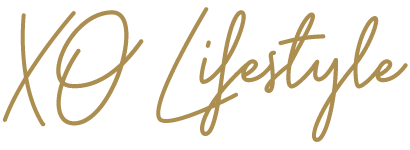
When successful individuals recount their career path, it may be alluring to think that everything went according to plan as they marched steadily towards the degree of success that gave them a chance to instruct the rest of us on how to do it.
However, that could not be further from the truth. Career development has its ups and downs. Individual employee career development goes much beyond simply improving a person’s skills. A program like this would change the employee’s perspective of work from “simply a job” to “a job which I enjoy.”
Interpersonal skills, assertiveness, and flexibility are some of the top career development pillars you require to realize growth. Motivated employees will always look for ways of developing their careers. Knowledge of oneself and a career plan synchronize the appropriate individuals with the right company.
While the responsibility for career development typically rests with the employer, employees must also actively participate by taking advantage of the available chances. You must join personal career development programs if you want to remain relevant and even attract better employers.
These are the five pillars of personality development and career advancement.
- Interpersonal Skills
The capacity to establish rapport with others is one of the significant determinants of career progress. You should learn to develop productive, courteous work relationships with your workmates. Interpersonal skills help you to communicate well.
Cultivating awareness of your ideas, feelings, and reactions is critical. It also entails how you interact with others based on your understanding of yourself and others. Examples include maintaining boundaries, being genuine, controlling anxiety related to being close to others, and maintaining awareness about oversharing or under-sharing.
- Assertiveness
Most people confuse aggressiveness and assertiveness. Aggressiveness is thinking that you’re always correct and everyone else is wrong. Overconfidence can also come off as aggressive to others.
Assertiveness means you are okay just as you are and are neither better nor worse than the others you interact with. This will make you and those you interact with more comfortable.
- Self Efficacy
It entails having faith in your potential for success and your capacity for initiating change. Your words and body language convey how you feel about yourself. Most of the time, others won’t believe in your abilities if you don’t believe in yourself.
Self-efficacy is a concept that you cannot express verbally. You must have a solid foundation for your self-confidence in something real. The foundation of self-efficacy is knowing what you are good at, being willing to talk about it without embarrassment, and having confidence in yourself.
- Flexibility
Many companies often battle with conflicting needs, which might occasionally lead to chaotic work environments. Even while this might be annoying for anyone, being able to work in “imperfect” circumstances is crucial for career growth.
Accept those changes or continue to gripe, protest, and yell in such circumstances. Employment responsibilities change abruptly, and businesses react by enacting new regulations. Consider that life is happening for you, so you might learn instead of viewing it as something happening to you.
- Openness to Learning
To become an invaluable employee, you must desire to learn or be able to teach yourself new things. It does not imply that you must become an expert in everything. But show curiosity, take advantage of learning chances, and apply what you learn to develop your career.
How to Create a Career Development Plan
The following is a detailed guide to creating a foolproof career development plan.
Identify Your Status
Identifying your current career status is the first step in creating a plan for your professional development. This step enables you to examine your present capabilities and skill set. Include your current standing in your field, your level of education, and whether you want to seek graduate-level education if you haven’t.
Ask yourself what motivates you to go to work every morning, the skills you possess, and the experiences you have. Doing this lets you know what you must do to achieve career progress.
Choose a Destination
After that, decide the direction you want your career to take through the following steps;
Brainstorm – Avoid any barriers or restraints that may keep you back. Where would you like to be in the next five or ten years? List your long-term professional objective.
Create more precise goals – Establishing your desired position in minor steps can be useful. For instance, where do you want to be in three years, given where you are now and your current skill set?
Analyze Your Gap
A gap analysis establishes where you currently are and where you want to be. For a precise gap analysis, do the following;
Examine your desired career – Find job ads for the position you want, considering your long-term career focus goals. Ensure the requirements align with your end goal and the descriptions correspond to your expertise and skills.
Speak to seasoned professionals – Spend some time talking to your mentor, boss, and coworkers to determine if there are any important things you should add to your list. Even if you might not want to inform your boss that you want to move on to a position with a higher salary at another company, you can still discuss with them the particular skills you intend to acquire.
Rank your credentials – Once you’ve put together this list of qualifications, go over it and compare your present knowledge, training, and experience to the requirements.
Find the gaps and establish patterns – List all the areas where you need to grow. You can do that by grouping common skills. You’ll start to see trends in which knowledge or experiences you already have a strong foundation and the ones that need more work.
Create Your Career Development Plan
You are prepared to create a plan to progress in your profession now that you know the specific skills you must acquire. Create a clear plan to achieve your career goals using the list of abilities, knowledge, and experiences you hope to gain over the coming years in this stage.
Keep Measuring Your Progress
Once you’ve designed your career growth plan, it doesn’t end there. Remember how the implementation compares to the due dates you gave yourself to hold yourself responsible.
Remember, it is a good idea to revisit it sometimes to adjust your objectives to reflect your current situation.
Final Thoughts
Most modern career development models have trouble incorporating the change, complexity, constructivism, and opportunity that characterize today’s decision-making processes. But following the key career development pillars above can lead to smooth career growth.






